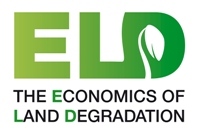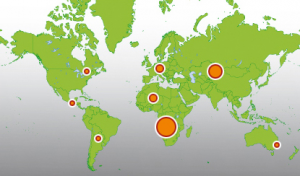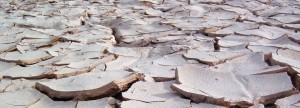Why should we here in Canada be grateful on October 14, 2013, Thanksgiving Day? Because we live in a part of the world where there is abundant food, relatively clean air, and lots of freshwater. We have more than enough energy resources to allow us to plug in our electronic toys. We live in housing that doesn’t vanish when a storm strikes like those in India hit by the cyclone this weekend. We have an infrastructure of roads, rail and air that connect us to resources we don’t have at hand. So there is lot here to be thankful for.
But that is the not the case for many others living on this planet. More than a billion of us humans are undernourished. For the rural poor, 1.2 billion of us who depend on subsistence agriculture to feed our families, we face a growing problem in agricultural capacity. Much of the land these farmers depend on is degraded. In fact studies on combating desertification show that 24% of all usable agricultural land today can be defined as degraded. The causes: climate change, over farming, cyclical drought, progressive salination from poor irrigation practices, soil erosion, deforestation, monoculture plantings, over grazing, and desertification.
A global initiative aimed at creating best practices for sustainable land management, called ELD, is studying ways to transform our behavior about managing land as a resource. They are doing this by putting a price tag on the cost of degradation. In the U.S. alone it is said to be worth $1.4 trillion per year. This is based on the potential revenue from crop yields if the land were better managed. For the Developing World better land care could add as much as 8% to annual GDP.
The map featured on the ELD website, seen below, is a portal to initiatives and case studies around the world studying land degradation. Each orange circle is a link to specific reports and case studies. It is hoped by providing a single repository for political decision makers and the private sector, that both can benefit from the science reported here, providing the means for informed decision making on policy and investment in sustainable land management. It is also hoped that the case studies and reports alter preconceived notions about the causes of degradation.
For example not enough research has gone into studying where soil erosion is happening and its causes. The common thought process on the subject tends to focus on erosion in dryland areas. Yet one of the studies on the ELD site, reported in 2008, shows that, from 1981 to 2003, 78% of soil erosion degradation was located in areas defined as being wet.
So we have another reason to be thankful on this day – that there are initiatives like ELD that can provide all of humanity with the means to overcome the challenges we face collectively. We can put off the Malthusian prophecies of impending hunger and starvation. We have the means and collective intelligence of initiatives like the ELD to guide us to a future of abundance. For this I am thankful.











